Dental Implant Bone Grafts – Autograft, Allograft and Xenograft
Autograft
Our teeth are held securely in the jaw. The roots stimulate the bone, maintaining its natural shape and form. After tooth loss, the bone is no longer used, and it may begin to immediately resorb or shrink. Over time, significant bone loss may occur, resulting in a thinned ridge. If there is inadequate bone, it may be impossible to place dental implants.


Our exceptionally accomplished dental implants providers use several grafting techniques that involve your body’s own bone to rebuild a deficient area. One of these techniques involves extracting bone from an area of the jaw, referred to as the ramus.

The bone is shaped in small blocks and secured to the thin ridge. A bone substitute product is used to adequately fill the surrounding area. And specialized coverings are placed over the site to accelerate and improve healing. After the bone matures, implants can be placed.


Another technique involves extracting bone from the chin in small blocks. The bone is secured to the jaw with specialized screws and substitute bone is used to fill the surrounding areas. Healing membranes cover the grafts, and once the bone has matured, implants can be placed.


Bone grafting can make dental implant treatments possible, even with severe cases of bone loss.
The Autograft is considered the Gold Standard. It is defined as tissue transplanted from one site to another within the same individual. It is basically your very own bone taken from a donor site and placed somewhere else in the body, into the recipient site. The best success rates in bone grafting have been achieved with autografts, because these are essentially living tissues with their cells intact. There is no immune reaction and the microscopic architecture is perfectly matched. The only disadvantage of the autograft is that it has to be harvested from a secondary site in your body, which usually means more morbidity and a more complicated surgery, overall. For most grafting purposes confined to Oral Implantology we can use another part of the jaw (i.e., chin or back portions of jaw) as an acceptable donor site. This way, we stay surgically inside the mouth and avoid any extraoral wounds and scarring. Sometimes, however, when there is not enough bone volume available intraorally, we have to get bone from other parts of the body (usually your hip bone or your tibia (shin) bone) or even from a bottle – alloplast, allograft, or xenograft.
Allograft
Disease, decay, or trauma can cause tooth loss. If a lost tooth is not immediately replaced, the surrounding bone may begin to resorb or shrink. Severe bone loss can make it impossible to place a dental implant. To rebuild the bone, we must first access the area beneath the gums.
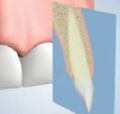

A small block of substitute bone is shaped to restore the ridge to its original form prior to bone loss. The block is secured in place, and the surrounding area is covered with additional bone product to help create a more natural shape.
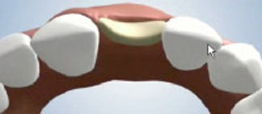
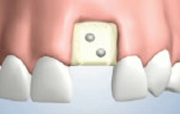
A specialized membrane is then placed over the site to improve healing. When the bone has successfully matured, the titanium screws are removed. This type of bone grafting can restore severe cases of bone loss, making it possible to successfully place dental implants and enjoy the benefits of secure replacement teeth.
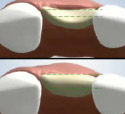

The Allograft is defined as a tissue graft between individuals of the same species (i.e., humans) but of non-identical genetic composition. The source is usually cadaver bone, which is available in large amounts. This bone however has to undergo many different treatment sequences in order to render it neutral to immune reactions and to avoid cross contamination of host diseases. These treatments may include irradiation, freeze-drying, acid washing and other chemical treatments. In the U.S. virtually all donors are being prescreened for infectious diseases before their bone is even accepted into the tissue banks. After that the processing of the bone would eliminate virtually any chance of cross-infection.
Xenograft
The Xenograft is defined as a tissue graft between two different species (i.e. bone of bovine origin). Tissue banks usually choose these graft materials, because it is possible to extract larger amounts of bone with a specific microstructure (which is an important factor for bone growth) as compared to bone from human origin.
Alloplast
The Alloplast usually includes any synthetically derived graft material not (coming) from animal or human origin. In Oral Implantology this usually includes Hydroxyapatite or any formulation thereof.
Each of the bone graft materials is usually developed with a specific purpose or advantage in mind. Some claims made by tissue banks about a certain bone graft material may sometimes have to be taken with a grain of salt, until independent research can verify those claims. The main purpose of using the latter three of the above graft materials is usually to avoid a secondary surgery for harvesting autogenous bone. Your surgeon will make a decision with respect to the bone graft material, based on your individual needs and the latest research in that field.
The anchors become securely embedded in the jaw as the bone grows around them over the first few months. Abutment posts are inserted into the anchors and carefully crafted replacement teeth are permanently attached to the posts, providing the recipient with natural looking and feeling teeth.
Call or Email Today to Schedule Your Bone Grafting Consultation
If you have been told that you need a bone graft, schedule a personal consultation with one of our experienced NYC dental implants providers. They will perform a thorough evaluation of your teeth, gums and jaw bone and recommend the best grafting technique for you. Because our dentists are also leading New Jersey / New York periodontists, they can also perform any gum treatments you might need prior to the placement of dental implants. Schedule your consultation by calling us or by clicking here.
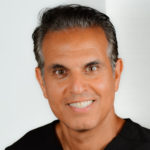
Dr. Richard Nejat, DDS
Dr. Richard Nejat is a board-certified periodontist offering leading-edge dental implant placement and gum surgery techniques. Dr. Nejat has completed many years of advanced training at highly recognized medical institutions and is a member of numerous leading professional organizations. Recognized as a foremost New York dental implants provider, Dr. Richard Nejat is frequently invited to lecture at professional seminars and symposiums. Dr. Nejat has been practicing since 1997.
Dr. Nejat is a member of the American Board of Periodontology, American Academy of Periodontology, Academy of Osseointegration, Northeastern Society of Periodontists, New Jersey Society of Periodontists, New York Dental Society, and International Congress of Oral Implantologists.
